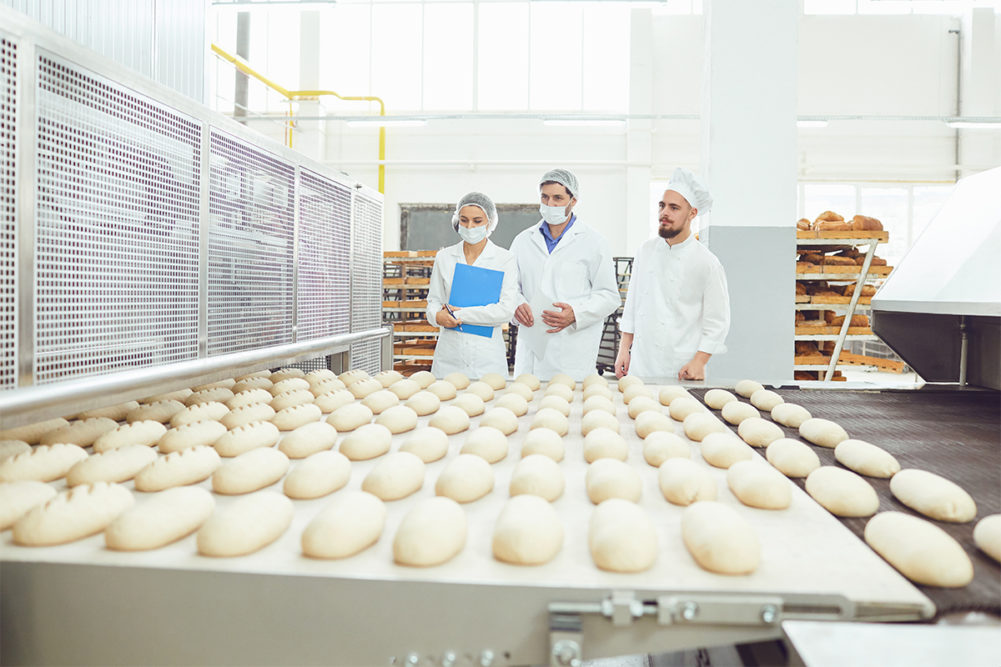Any discussions around packaging and processing machinery these days must inevitably begin by addressing the ever-changing impact of the coronavirus (COVID-19) pandemic on manufacturing.
Most US manufacturers initially tightened their belts during the early onset of COVID-19. Still, some consumer packaged goods companies (CPGs) embraced and invested in Industry 4.0 solutions to better manage operations despite the tumult of a pandemic.
Automation Timeline: The Drive Toward 4.0 Connectivity in Packaging and Processing, a white paper from PMMI, The Association for Packaging and Processing Technologies, revealed that 13% of surveyed respondents — mostly from larger CPGs — said they accelerated their timelines for automation as a result of COVID-19.
A similar ongoing PwC study of manufacturers suggests even greater momentum in this direction, with some manufacturers perhaps even making a move all the way the adoption of robot and cobot technologies.
According to that report, 40%t of manufacturers expressed concern about their workforce, looking into robotics technology to compensate for locked-down employees, supporting health and safety and keeping operations afloat.
According to the Wall Street Journal, several of the largest meat processing companies have been actively developing robotic processing systems for at least the last five years, with one key industry player having invested $500 million since 2017 alone.
As manufacturers deal with an evolving and possibly permanently changed supply chain, companies have reestablished their embrace of robotics. Caution continues to rule the day, but even with COVID-19 and its related budget constraints, many CPGs are at the very least reviewing robotics as a key long-term investment. As per an IDC 2020 supply chain survey, 73% of respondents state that robotics will be significant or imperative to their company in the following three years. Perhaps the better question is not when robotics will become more commonplace but where facilities will use them.
CPGs claim a gap in familiarity with new robotic applications, not understanding where and how to deploy robots successfully. Many manufacturers remain stuck in a sort of “end-of-line box” in which they are hard-pressed to envision robotics applications outside of traditional roles in secondary packaging and palletizing.
One nutraceutical company engineering manager quoted in PMMI’s report indicated secondary packaging as a target in the coming year. “We are using robotics now for cartoning to collate, pack and stack, and have plans to install robots for case packaging and palletizing,” he said.
With the growing acceptance toward Industry 4.0, OEMs and suppliers have an opportunity to provide education and guidance to manufacturers on how robots and cobots can improve their operations well beyond the traditional scope of end-of-line operations.
As COVID-19 has magnified an already challenging labor shortage issue, many of these companies have announced accelerated plans to deploy robotic processing systems to address urgent labor needs.
One of the fastest areas of growth for robot usage in manufacturing is collaborative robots or cobots. Cobots enhance processes by alleviating the requirements placed on humans and make production more efficient. They were on the rise before the outbreak of COVID-19 because of their versatility and ability to be quickly redeployed elsewhere with only minimal reprogramming.
These advantages make cobots a potential solution during the COVID-19 pandemic to ease the transition of companies into new operational realities as labor availability fluctuates and production schedules shift.
The biggest hurdle in implementing any automation is justifying the return on investment (ROI) of any automation project. In the current climate, a clear and reliable ROI calculation is more important than ever to make a case for automation expansion as many budgets tighten up.
To accurately calculate the ROI of a given project or purchase, manufacturers must factor in numerous variables regarding the project’s cost and the total impact on their operations to determine which automation strategies hold the most potential value.
It requires gathering, analyzing and interpreting a continuous stream of manufacturing and operational data to accurately assess the time it will take to recoup an automation project’s cost.
Establishing a precise universal methodology for calculating ROI is often an unattainable goal. Each project is unique and requires its own factors and input data but implementing a standardized set of parameters is achievable.
Rather than attempt to exhaustively address a long list of potential factors in an ROI calculation, OEMs suggest focusing on one key component that is garnering more attention: overall equipment effectiveness (OEE).
In general, OEE is a measurement of the percentage of overall manufacturing capability realized during production. The OpX Leadership Network, convened by PMMI, has developed a free suite of tools for understanding and quantifying the value of increasing OEE, which can then be used in the ROI calculation.
New technologies, solutions and education addressing the changing landscape of Industry 4.0 will be on display at Pack Expo Las Vegas co-located with Healthcare Packaging Expo 2021, which runs from Sept. 27-29
To register or learn more about Pack Expo Las Vegas and the virtual component of the show, click here.
Editor’s Note: Bryan Griffen is director, industry services, at PMMI.





